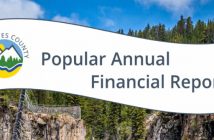With the improving economy in Oregon, you may be in a position to have some extra cash at the end of the month. But like many people, you may be torn between paying off debt and the need to save for retirement. Both are important; both can help give you a more secure future. If you’re not sure you can afford to tackle both at the same time, which should you choose?
There’s no one answer that’s right for everyone, but here are some of the factors you should consider when making your decision.
Rate of investment return versus interest rate on debt
Probably the most common way to decide whether to pay off debt or to make investments is to consider whether you could earn a higher after-tax rate of return by investing than the after-tax interest rate you pay on the debt. For example, say you have a credit card with a $10,000 balance on which you pay nondeductible interest of 18 percent. By getting rid of those interest payments, you’re effectively getting an 18 percent return on your money. That means your money would generally need to earn an after-tax return greater than 18 percent to make investing a smarter choice than paying off debt. That’s a pretty tough challenge even for professional investors.
And bear in mind that investment returns are anything but guaranteed. In general, the higher the rate of return, the greater the risk. If you make investments rather than pay off debt and your investments incur losses, you may still have debts to pay, but you won’t have had the benefit of any gains. By contrast, the return that comes from eliminating high-interest-rate debt is a sure thing.
An employer’s match may change the equation
If your employer matches a portion of your workplace retirement account contributions, that can make the debt versus savings decision more difficult. Let’s say your company matches 50 percent of your contributions up to 6 percent of your salary. That means that you’re earning a 50 percent return on that portion of your retirement account contributions.
If surpassing an 18 percent return from paying off debt is a challenge, getting a 50 percent return on your money simply through investing is even tougher. The old saying about a bird in the hand being worth two in the bush applies here. Assuming you conform to your plan’s requirements and your company meets its plan obligations, you know in advance what your return from the match will be; very few investments can offer the same degree of certainty. That’s why many financial experts argue that saving at least enough to get any employer match for your contributions may make more sense than focusing on debt.
And don’t forget the tax benefits of contributions to a workplace savings plan. By contributing pretax dollars to your plan account, you’re deferring anywhere from 10 percent to 39.6 percent in taxes, depending on your federal tax rate. You’re able to put money that would ordinarily go toward taxes to work immediately.
Your choice doesn’t have to be all or nothing
The decision about whether to save for retirement or pay off debt can sometimes be affected by the type of debt you have. For example, if you itemize deductions, the interest you pay on a mortgage is generally deductible on your federal tax return. Let’s say you’re paying 6 percent on your mortgage and 18 percent on your credit card debt, and your employer matches 50 percent of your retirement account contributions. You might consider directing some of your available resources to paying off the credit card debt and some toward your retirement account in order to get the full company match, and continuing to pay the tax-deductible mortgage interest.
There’s another good reason to explore ways to address both goals. Time is your best ally when saving for retirement. If you say to yourself, “I’ll wait to start saving until my debts are completely paid off,” you run the risk that you’ll never get to that point, because your good intentions about paying off your debt may falter at some point. Putting off saving also reduces the number of years you have left to save for retirement.
It might also be easier to address both goals if you can cut your interest payments by refinancing that debt. For example, you might be able to consolidate multiple credit card payments by rolling them over to a new credit card or a debt consolidation loan that has a lower interest rate.
Bear in mind that even if you decide to focus on retirement savings, you should make sure that you’re able to make at least the monthly minimum payments owed on your debt. Failure to make those minimum payments can result in penalties and increased interest rates; those will only make your debt situation worse.
Other considerations
When deciding whether to pay down debt or to save for retirement, make sure you take into account the following factors:
• Having retirement plan contributions automatically deducted from your paycheck eliminates the temptation to spend that money on things that might make your debt dilemma even worse. If you decide to prioritize paying down debt, make sure you put in place a mechanism that automatically directs money toward the debt–for example, having money deducted automatically from your checking account–so you won’t be tempted to skip or reduce payments.
• Do you have an emergency fund or other resources that you can tap in case you lose your job or have a medical emergency? Remember that if your workplace savings plan allows loans, contributing to the plan not only means you’re helping to provide for a more secure retirement but also building savings that could potentially be used as a last resort in an emergency. Some employer-sponsored retirement plans also allow hardship withdrawals in certain situations–for example, payments necessary to prevent an eviction from or foreclosure of your principal residence–if you have no other resources to tap. (However, remember that the amount of any hardship withdrawal becomes taxable income, and if you aren’t at least age 59½, you also may owe a 10 percent premature distribution tax on that money.)
• If you do need to borrow from your plan, make sure you compare the cost of using that money with other financing options, such as loans from banks, credit unions, friends, or family. Although interest rates on plan loans may be favorable, the amount you can borrow is limited, and you generally must repay the loan within five years. In addition, some plans require you to repay the loan immediately if you leave your job. Your retirement earnings will also suffer as a result of removing funds from a tax-deferred investment.
• If you focus on retirement savings rather than paying down debt, make sure you’re invested so that your return has a chance of exceeding the interest you owe on that debt. While your investments should be appropriate for your risk tolerance, if you invest too conservatively, the rate of return may not be high enough to offset the interest rate you’ll continue to pay.
Regardless of your choice, perhaps the most important decision you can make is to take action and get started now. The sooner you decide on a plan for both your debt and your need for retirement savings, the sooner you’ll start to make progress toward achieving both goals.
Provided by Ed Wettig, CFP, Wettig Capital Management which offers investment management, financial planning and retirement income strategies. Securities and investment advisory services offered through Royal Alliance Associates, Inc. Member FINRA/SIPC and a Registered Investment Advisor. Wettig Capital Management is independent of Royal Alliance Associates, Inc. and not registered as a broker/dealer or investment advisor.
WETTIG CAPITAL MANAGEMENT
Ed Wettig, CFP
FINANCIAL ADVISOR
541-706-9336
ed@wettigcapital.com www.wettigcapital.com




